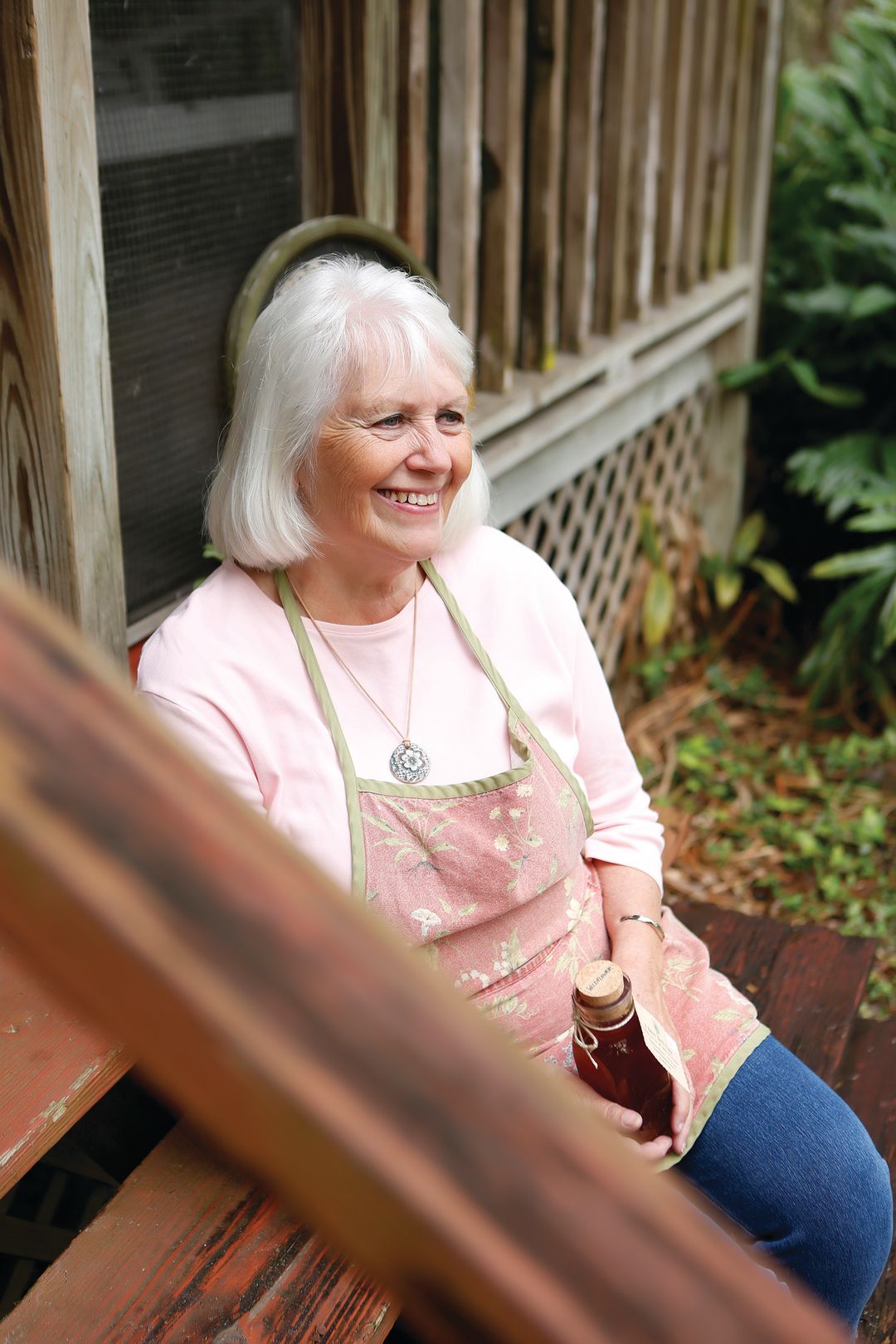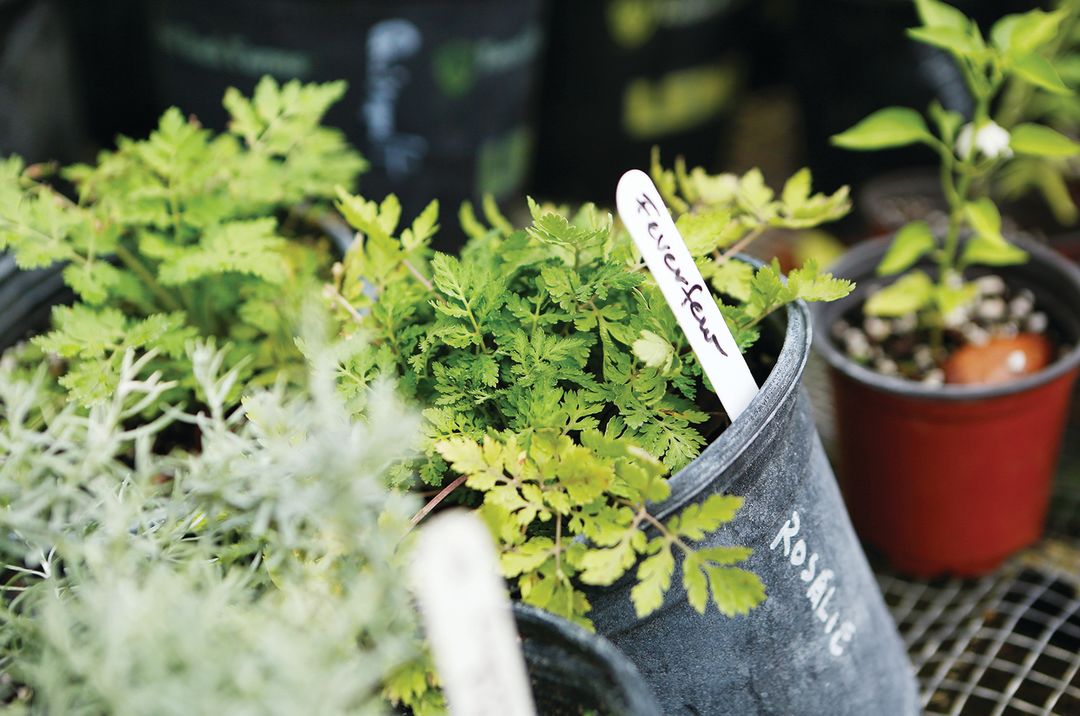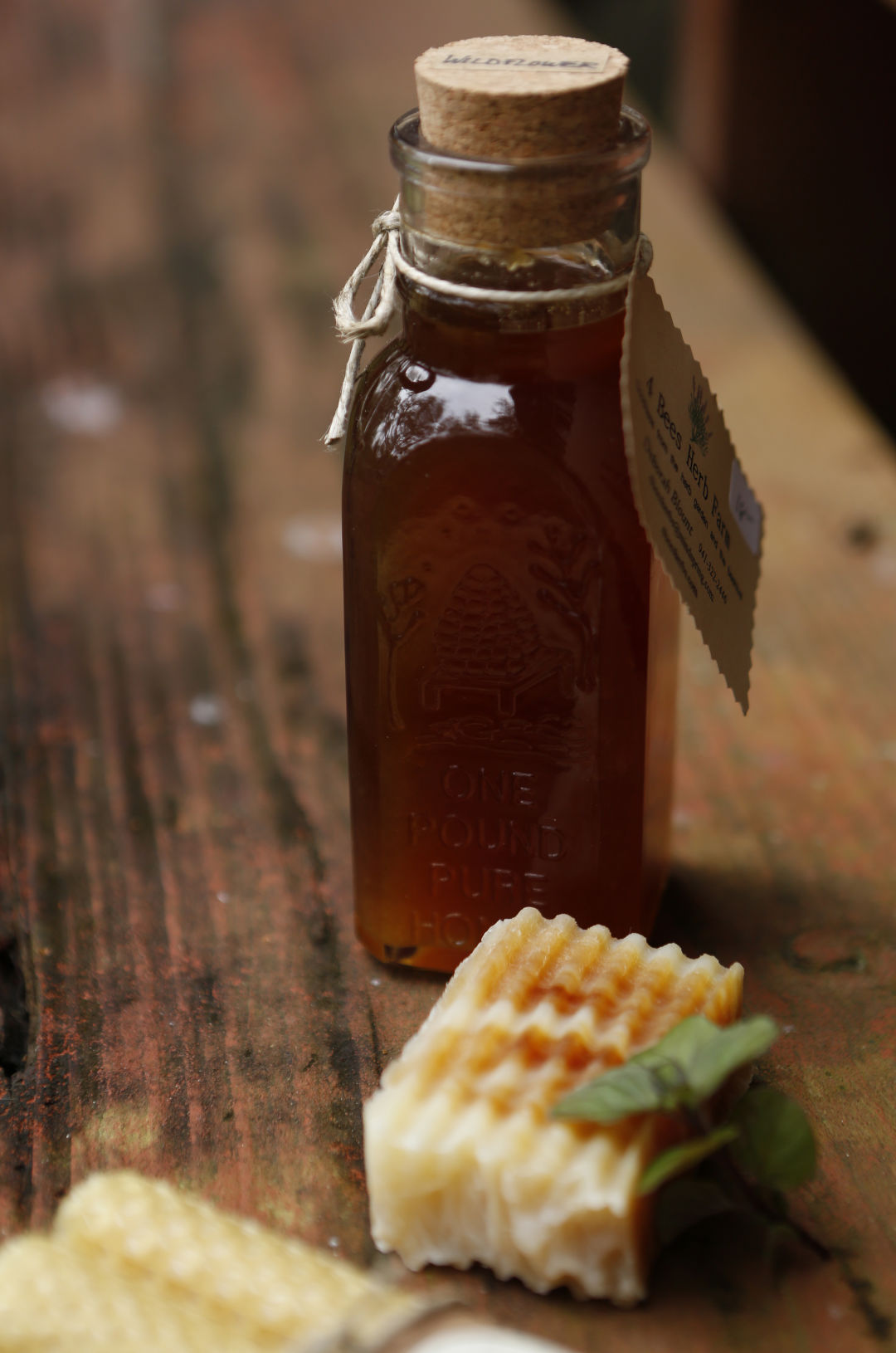Myakka Herbalist Debbie Blount Makes a Living From Her Floral and Herb Potions

Debbie Blount on the steps of her Florida Cracker cottage.
Image: Jenn Soos
Growing up on her family’s 100-acre farm in Holland, New York, Debbie Blount remembers kneeling in her grandmother’s herb garden as a 5-year-old to smell and taste wild-grown parsley. The memory has shaped her decades-long career as an herbalist, which blossomed after a friend gave her a scented geranium as a gift. Blount, now 70, was smitten with every aspect of the plant.
“I began studying the scented geranium’s properties, and everything opened up,” she says. “I subscribed to Herb Companion magazine and my husband, kids and I began visiting herb farms when we traveled.”
Blount’s parents retired to Siesta Key, and she joined them in Florida in 1971. After relocating to Old Miakka in 1989, she and her husband, Sam—a native Floridian who traces his family’s roots to the 1830s—built a Florida Cracker cottage on five wooded acres off Jo-Mar Road. “We cleared the land by hand using a grubbing hoe and a bush axe,” Blount recalls, “and built in-ground beds for an herb garden.” Her herbs took off, and by the early 1990s, Blount was running a successful fresh-cut herb business, providing herbs to Morton’s Gourmet Market, and creating an in-ground herb garden for Chef Paul Mattison’s now-shuttered Siesta Key restaurant.

Feverfew, one of Blount's many herbs.
Image: Jenn Soos
Not long after, encouraged by her studies of herbs and their medicinal powers, she began making syrups, soaps and salves. And she quickly put her medicinal knowledge to the test after her then-preteen son contracted blood poisoning when he stepped on a shell. Blount wrapped her son’s foot in a poultice using a variety of plantain she’d been studying called plantago major. By the next morning, she says, her son’s foot was better; the telltale red line that comes with blood poisoning had disappeared and so had the wound from the shell puncture. Everything had been drawn out into the herb.
“It took a bit of courage to do that—to say to your child, ‘Oh, here, put this green stuff on your foot for blood poisoning,’” Blount admits. “But I had confidence in the herbs and believed it would work. That was a real turning point for me. I said, ‘I’m all in. These herbs are true, and they’re working.’”
It hasn’t always been easy for Blount. In 1993, a freak storm swept through Myakka, destroying her herb beds and crippling her business. After keeping an apiary for more than half a decade, her beloved bees fell prey to colony collapse disorder. And in 2017, Hurricane Irma ravaged her garden and shade house, which she’d rebuilt after the 1993 storm and which stood for 24 years.

Local honey and Blount's handmade soap.
Image: Jenn Soos
But in 2013, she and her husband opened their 4 Bees Herb Farm shop off her 50-foot front porch, where Blount sells fresh and dried herbs, teas, infused honeys and syrups, beeswax candles and handmade soaps and salves. She makes products several days a month and welcomes a mix of regular clients and new customers every week. Infused honey syrups like hawthorn, said to be good for the heart, and elderberry—an oxblood-colored syrup made from infusing dried elderberries in honey, said to help prevent and relieve symptoms of cold and flu—are her most popular sellers; she sources dried herbs from 100 percent organic growers, but still grows 50 to 75 fresh varieties herself, depending on the time of year.
“Herb gardening is so creative,” Blount says. “Growing them is what it’s all about.”
How to Start Your Own Herb Garden
Start with pots. A potted herb garden is a great way to start. “Anyone with a balcony can have an herb garden,” Blount says. Start with a pot that’s 18 to 24 inches in diameter, and plant a mix of herbs like rosemary, oregano, basil and Italian parsley.
If you’re growing in the ground, amend the soil. “In Florida, everything you put in the ground to amend the soil breaks down quickly,” Blount explains. “So give your herbs more food than you would up north, because the soil here is so porous and has so few minerals.”
Watch the sun. “You need way more shade in Florida than anywhere else,” Blount says. She cautions against putting herbs in direct sunlight except for hardy rosemary—“and maybe lavender.”
Plant what you like. In Blount’s rotation right now are lavender—“It fills up the senses,” she says—as well as African blue basil, a perennial; lemongrass; and mints—including her current favorite, orange bergamot mint.


